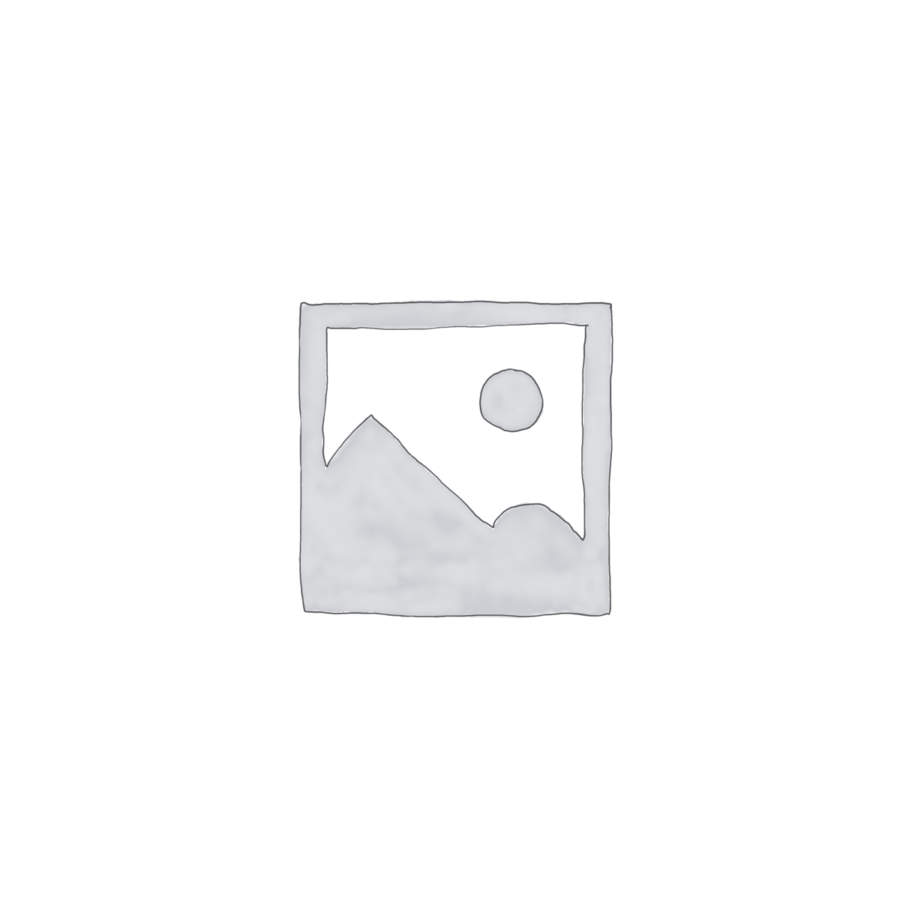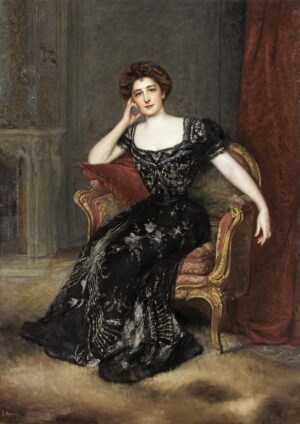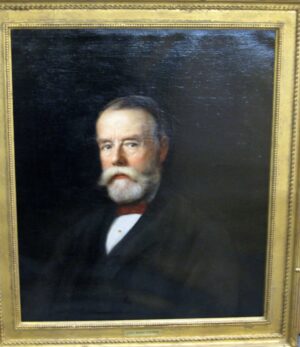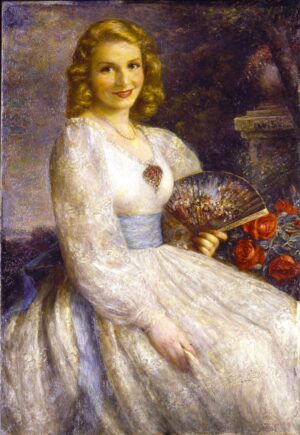
REULING, Mrs. George (Miss Elisa Kulp)
Description:
Three-quarter length, seated, ‘appears ready for a ball, being attired in a décolleté dress of white satin and lace. An ermine robe has just fallen from her shoulders and lies by her side.’ (Baltimore Sun, May 25, 1889)
Location:
Present Whereabouts Unknown.
Bibliography:
Baltimore Sun, May 25, 1889
Baltimore Evening News, January 21, 1892.
Dr George Reuling, a Lutheran, was widely known in particular for his early eye surgeries, especially in the area of cataracts, being the first American ophthalmologist to remove a cataractous lens within its capsule. Dr. Reuling was born in Darmstadt, Germany, Nov. 11, 1839. He studied medicine at the University of Giessen from 1860 till 1865, and, in 1865 and 1866, at Munich, Vienna, and Berlin. His degree was received at Giessen in May, 1866. From the day of his graduation until September of the same year he served as surgeon in the Prussian Army in the war against Austria. Late in 1866 he became assistant surgeon at the eye hospital, Wiesbaden. The following year he studied at Paris under de Wecker, Liebreich and Meyer. In 1868 he moved to America settling in Baltimore. In 1869 he was appointed surgeon-in-charge of the Maryland Eye and Ear Infirmary. He was also at various times oculist and aurist to the Baltimore Home for the Aged and the German Hospital. From 1871-73 he was professor of eye and ear surgery in the Washington University, and in 1893 was appointed to the chair of ophthalmology and otology in the Baltimore Medical College.
Dr. & Mrs. George Reuling lived at 103 West Monument Street, Baltimore, according to the Baltimore and Commercial Advertiser, Friday, January 22, 1892. Muller-Ury stayed with the Reulings at the time that his portrait of Cardinal Gibbons was shipped to the Catholic University in Washington D. C. from Baltimore. Dr. Reuling (1839 – 1915) was an ophthalmologist, and a Professor at the Baltimore Medical School, whom the sitter (c.1853-1925) married on September 21, 1871. They had a son called Robert Reuling, also a physician, and a daughter called Marie who became Mrs. William Julian De Bullet, noted in the New York Times as Dr. and Mrs. Reuling’s daughter, who was a visitor to Narragansett Pier in 1905. William Julian De Bullet and his brother John Charles Eugene De Bullet were the sons of Anthony Francis Eugene de Bullet of Baltimore. She later became Marie Reuling Pleasants (Mrs Richard Pleasants).
He was the owner of a large collection of Old Masters, including Carlo Maratta and Rubens, which were discussed in an article in The Collector and Art Critic Vol. 4, No. 7 (May 1906) pp, 206-8; as well as early American paintings, including a portrait of Washington by Charles W. Peale (lent to Cleveland Museum of Art in 1916 with an insurance value of $15,000) which was consigned to Duveen’s in 1919 who sold it to Henry E. Huntington in February that year.
Stated in the Sun (Baltimore) of May 25, 1889 as being placed on view shortly at the gallery of MYERS & HEDIAN.
From the description the picture must have been the prototype of the Mrs. Theodore Havemeyer of 1891.




